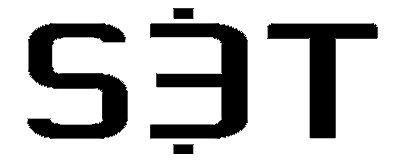🐻❄️S3T April 26, 2024 -Arctic, VASA, Llama3, Mental Health cost, Synthetic media, Leading with an abundance mindset

Welcome to S3T, the essential newsletter, podcast, and learning platform for change leaders. Every week we review the top developments and insights you need to stay ahead of the curve, build your ethics & leadership skills, and drive intentional beneficial innovation.
🎧 Listen to this episode on the S3T Podcast - Be sure to follow the S3T podcast so you never miss a show!
In this edition of S3T:
📉 Economic Overview: The US economy slowed down in Q1 2024 due to high interest rates, though personal income slightly rose by 0.3%. Meanwhile, India's factory activity surged to its highest rate since 2008, and China's GDP also grew. Comprehensive macroeconomic data is available for members through the Global Economic Dashboard, including crypto market insights.
💵 Crypto Payments: Stripe announced its reintroduction of cryptocurrency payments, initially supporting USDC—a regulated digital currency exchangeable for US dollars, indicating a significant move towards mainstreaming crypto transactions.
💔 Economic Impact of Mental Health: A Yale study revealed that mental health issues cost the US economy $282 billion annually, akin to the economic downturn seen during a typical recession. This cost, exacerbated by reduced economic participation, is about 30% higher than earlier estimates.
🌐 Advancements in AI and Implications for Industry: Snowflake introduced Arctic, a specialized large language model (LLM), suggesting a shift towards more targeted AI solutions using enterprise data. Meanwhile, the integration of Meta AI's Llama 3 into social platforms and its implications for call centers highlight the transformative potential of GenAI in customer service and beyond.
🌍 Leadership and Mindset Shifts: The S3T Perspective emphasizes the importance of adopting an abundance mindset over scarcity to inspire and empower teams. This approach encourages inclusivity, fosters innovation, and transforms decision-making processes, preparing leaders to cultivate a sustainable legacy in their organizations.
Opinions expressed are those of the individuals and do not reflect the official positions of companies or organizations those individuals may be affiliated with. Not financial, investment or legal advice. Authors or guests may hold assets discussed.


📉Q1 Ups and downs shaping the outlooks of your customers and stakeholders
Latest economic data shows the US economy put on the brakes in Q1 2024 due to high interest rates, while personal income rose 0.3%. Elsewhere in Q1, India's factory activity grew at its fastest rate since 2008. China's GDP also accelerated.
Complete macroeconomic data for paying members:
- For 500+ international economic indicators see the Global Economic Dashboard.
- Crypto Market Cap at a Glance - top assets color coded to reflect gains/losses.
💵 Mainstreaming Crypto Payments
Stripe the payments company announced this week it will begin to accept crypto payments again, starting with USDC, the regulated digital currency that can be redeemed for US dollars.
💔The recession that hits every year
A new Yale study that connects the dots between psychiatric research and economic data has found that mental illness costs the US $282B per year. This figure is on par with the impact of the average economic recession, and about 30% larger than previous estimates. Read the full study here (PDF)
This study, unlike previous studies, factored in the changes in the diminished economic participation of people suffering from mental illness:
- Spending and consuming less
- Investing less in houses or stocks
- Choosing less demanding jobs
1 in 5 Americans live with mental illness. This suggests that 20% of the population is working, consuming and investing less than they otherwise would.
The human suffering that comes with mental illness should be motivation enough to take action to ensure access to care for all who need it. But for those who may think we can't afford to take policy and community action, this study should be evidence enough that we can't afford not to.
The researchers for this study deserve kudos in my view because cross disciplinary studies like this one can yield key insights about how to achieve affordability and sustainability in healthcare. This same cross disciplinary approach could be used to measure the full effects of other aspects of public health. People with health conditions in general experience reduced ability to work and earn, and may often cause others to miss work or quit their jobs in order to focus on caregiving.
This economic impact has prompted some to begin exploring alternative healthcare finance models that view healthcare medical expense as an investment in economic growth - healthier people enable healthier economies.


🤖GenAI & LLM Progress
Mix of Experts LLMs
This week Snowflake announced Arctic, a mix-of-experts LLM to compete w Databricks. This hints at a couple of potential trends to watch:
- Training models at lower and lower price points (Snowflake says their training compute budget was 2M)
- Shift from LLMs trained-on-internet data to LLM's trained-on-enterprise data.
Snowflake has emerged as a preferred cloud warehouse for enterprises migrating off previous generation enterprise data warehouses. These orgs hold large collections of industry specific data that was not available to the likes of ChatGPT when they were trained. Snowflake, Databricks and possibly other challengers may represent the new cohort of industry specific LLMs that unlock value beyond the abilities of the generic trained-on-internet LLMs.
More context and tech detail:
- Training and deploying LLMs in Snowflake
- Fine Tuning LLMs in Snowflake
- Developing LLM Apps with Cortex
VASA, Synthesia and Synthetic Media
Microsoft VASA can create a talking head video from a single photo and audio track. The AI service was trained on YouTube videos of celebrities. Microsoft does not yet have plans to release this as a tool or product. Related: Synthesia's plans for full body avatars set off a new round of deepfake alarms. The company says they prefer the term "Synthetic Media".
Llama 3 & Meta AI - don't expect profits yet
Meta has released Llama 3 and integrated Meta AI - its answer to ChatGPT - into Instagram, Facebook, WhatsApp and Messenger. But Zuckerberg warns that profits from Gen AI will take time to develop. (Related:Significant % of CIOs don't expect ROI from AI for 2-3 yrs)
- Start using Llama 3 in your AI solution.
- Try Llama 3 via the Meta AI site here.
I tested Llama 3 against GPT-4 using a technically detailed question and asked for supporting links. GPT-4 provided more relevant links. Llama did not provide individual links but instead sent me to a Bing search results page.
Still, the prospect of a powerful, easy to use LLM tool suddenly being available natively in the Facebook/Instagram/WhatsApp universe is going to be a game changer.
GenAI to impact call centers
Overseas call centers may face an existential need to pivot over the next year, according to Tata Consultancy Services CEO K Krithivasan - if GenAI chatbots are able to analyze customer transaction history they could take over a large portion of call center work. In addition Krithivasan expects that analysis of customer transactions could actually prevent calls from coming in - addressing the customer pain point before a call is made.

🦖Render Network: How will GenAI impact this token economics leader?
Why Change Leaders are watching Render
The Render Network is the first decentralized GPU rendering platform, empowering artists to scale GPU rendering work on-demand to high performance GPU Nodes around the world.
Render has emerged as a respected crypto project and attracted the attention of crypto investors because it has real-world utility (optimizing 3d rendering), a user base with observable growth, and a credible partnership with OTOY Inc - the cloud graphics company. Unlike many crypto projects it has a credible business model with potential to deliver investor ROI as it scales. Together Render and OTOY co-created OctaneRender, recognized as one of the fastest GPU renderers.
Render is worth watching because it represents an early attempt to create a token economy that has real world practical value - creating a low-cost transaction layer that enables and optimizes the compute intensive process of rendering 3D animations.
Render's model and approach provide food for thought for change leaders who are looking for ways to create low-cost transaction layers that help streamline processes in other sectors. For example in healthcare, the set of transactions between payers and providers incur millions of dollars (maybe billions, just being conservative here) in transactional fees. Token economy approaches applied carefully could significantly reduce these transactional fees which are a significant cost factor for healthcare - one that doesn't really add value. These transaction fees are what they are because the financial institutions and networks haven't been motivated to adopt more efficient approaches.
On to our next point:
Does the rise of GenAI threaten Render's model?
The Render business model was built with the assumption that artists would invoke the rendering process in order to complete modeling and rendering projects the artists were commissioned to do.
- GenAI allows non-artists to request the generation of videos, animations and other rendered images directly via a conversational prompt without engaging artists and their teams.
- If 3D artists who use Render are about to be dis-intermediated from the 3d model and animation rendering process, what are the implications for the Render business model and future revenues?
Proactive Step
Render and OTOY recently partnered with Stability AI in what appears to be an attempt to gain a foothold in the value chain of a GenAI dominated 3d model and animation industry.
- OTOY and Stability AI will integrate Stability AI models to run on the Render Network's GPU pool, and allow Stability AI to be invoked from within in 3d content workflows facilitated by OTOY.
- The partnership also intends to produce licensing tools that enable artists to control their likeness and receive royalties for their IP when used in generative AI models.
Questions remain
This seems like a positive proactive step. I'm hopeful that Render and its partners will find a way to keep artists in the equation, and continue to support the all important creative economic sector.
However there is a question of whether Stability AI was the strongest player Render could have partnered with. "Midjourney generally outperforms Stable Diffusion" says this comparison. OpenAI's Sora - text driven video generation - does not yet have a timeline for public availability, but may represent another concern for the future of the Render business model. On the positive side, advocates point to the early preview of Stable Diffusion 3 as a possible boost to the Stability AI in this highly competitive space.
Investors are getting a new lens on the world - looking at how and where GenAI will disrupt and change the industries and companies they are involved in.


🌍 S3T Perspective: Abundance vs Scarcity
Cultivating an abundance mindset is an individual choice and a strategic imperative for leaders at all levels.
The twin possibilities of scarcity and abundance are deeply rooted in the human experience. We can set our expectations toward one or the other. And this makes all the difference.
Sometimes, it's hard to believe in abundance when you're operating inside corporate structures where scarcity is the dominant mental model, and where zero sum games may be in play all around you. But remember, meaningful human achievement often happens in spite of, not because of scarcity driven corporate structures.
Adopting an Abundant mindset enables leaders to inspire and empower their teams by demonstrating that there is indeed enough success to go around.
This S3T Perspective on Scarcity vs Abundance teaches you the critical strategies you need for applying an abundance mindset in your organization, and will help you learn the following change leadership skills:
- Challenging Zero-Sum Thinking: Leaders will learn how to recognize and move away from scarcity mindsets, instead embracing the limitless opportunities that an abundance mindset can provide, which is crucial for fostering innovation and growth.
- Fostering Inclusivity and Innovation: The text provides strategies for creating a workplace that actively engages younger generations like Gen Z and Millennials, leveraging their digital fluency and diverse perspectives to enhance organizational operations and adapt to rapidly changing markets.
- Enabling Open Decision-Making Processes: Leaders will discover the importance of shifting from traditional, closed-door decision-making to transparent and inclusive practices that empower all employees, fostering a sense of ownership and commitment to the organization's success.
- Cultivating a Legacy of Leadership: The importance of setting a precedent for future leadership styles that prioritize inclusivity and collaboration, ensuring that the next generation of leaders can sustain and build on the cultural and innovative gains made.
Click here to continue your learning.

🌷Nature Notes
Jack in the Pulpits are flowering now in stream valleys in the shade of large trees. Here are a few of them seen this past weekend near New Hope Creek. Look for them in little groups - the first thing you'll probably spot is their 3 diamond shaped leaves then under or behind them you'll notice the flower as shown above.
Learn more about Jack in the Pulpits and other native wildflowers at the Lady Bird Johnson Wildflower Center site at wildflower.org.

Member discussion